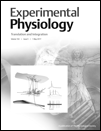 Researchers have retracted a 2016 paper after discovering that they accidentally administered three times the reported dose of anesthesia to rats.
Researchers have retracted a 2016 paper after discovering that they accidentally administered three times the reported dose of anesthesia to rats.
In the Experimental Physiology paper, the authors set out to mathematically map how rats’ blood pressure changes under different conditions, which required the rats to be anesthetized. But their findings were called into question when they found the rats had received a much higher concentration of anesthesia than intended. According to the notice, this higher dose compromised the “objectives of the experiment.”
The corresponding author Karol Ondrias, from the Institute of Molecular Physiology and Genetics at the Slovak Academy of Sciences in Bratislava, told us how the dosing error occurred:
During controls of protocols and procedures of our experiments, I found that a stock concentration of Zoletil was not diluted 3-times before I.P. administration, as it should be. It was my lack of diligence. Therefore the administered anesthetic concentration was 120 mg/kg Zoletil and not 40 mg/kg Zoletil as was incorrectly written in the article.
Ondrias said that once he discovered the dilution mistake, he contacted Experimental Physiology. Ondrias told us that the journal responded, noting that such a high dose of anesthesia could have influenced the reported findings. Ondrias agreed and suggested that the article be retracted.
Here’s the notice:
The above article from Experimental Physiology, published online on 29 December 2016 in Wiley OnlineLibrary (wileyonlinelibrary.com) and in Volume 102:2, pp. 164–179, has been retracted by agreement between the authors, the journal Editor in Chief, Mike Tipton, and John Wiley & Sons Ltd. The retraction has been agreed because a dosage of anaesthetic was stated incorrectly on page 166, column 2, line 1. The published article reads: ‘Rats were anaesthetized with Zoletil 100 (tiletamine + zolazepam, 40 mg kg−1, i.p.) and Rometar (xylazine, 5 mg kg−1, i.p.)’. In fact, the dosage of the anaesthetic used in the experiment was Zoletil 100 (tiletamine + zolazepam, 120 mg kg−1, i.p.) and Rometar (xylazine, 5 mg kg−1, i.p.). The higher dose of anaesthetic used may have led to cardiovascular depression, compromising the objectives of the experiment. All authors have approved the retraction.
“Mathematical relationships and their consequences between rat pulse waveform parameters and blood pressure during decreasing NO bioavailability” was published online in December 2016 and retracted in May.
The managing editor of Experimental Physiology told us that the authors had done the right thing by immediately and voluntarily retracting the article after they realized the extra anesthesia may have influenced their results.
Ondrias also noted that “the data are valid at the given condition of anesthesia.” He and colleagues now intend to do a follow-up study at the originally planned dose:
We plan to extend the study at low anesthesia conditions and compare the data with the data in the retracted article.
Hat tip: Rolf Degen
Like Retraction Watch? Consider making a tax-deductible contribution to support our growth. You can also follow us on Twitter, like us on Facebook, add us to your RSS reader, sign up on our homepage for an email every time there’s a new post, or subscribe to our daily digest. Click here to review our Comments Policy. For a sneak peek at what we’re working on, click here.